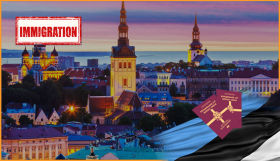Analytics, Demography, Estonia, Statistics
International Internet Magazine. Baltic States news & analytics
Thursday, 25.04.2024, 21:10
Immigration in Estonia exceeded emigration for the second year in a row
 Print version
Print version |
|---|
In 2016, net migration was positive for the second year in a row – immigration exceeded emigration. 14,822 persons took up residence in Estonia and 13,792 persons left Estonia in 2016. As external migration is often left unregistered by the residents of Estonia, as of 2015, Statistics Estonia also takes into account unregistered migration in addition to registered migration and as a result, the migration flows since 2015 have been larger compared to previous years.
When looking at demographic processes by sex, it appears that in a year, the number of men in the population has increased by 830 persons and the number of women has decreased by 1,139 persons. In 2016, almost 700 more boys were born than girls and as the share of women in the older age groups is bigger, there are more deaths among women than among men. Net migration was positive for both sexes (immigration exceeded migration), but the number of men grew by almost 600 more persons than the number of women due to net migration.
With regard to counties, it appears that in 2016, the population number increased in Harju and Tartu counties, but decreased in all other counties. The biggest decline was recorded for Ida-Viru county.








 «The Baltic Course» Is Sold and Stays in Business!
«The Baltic Course» Is Sold and Stays in Business!

